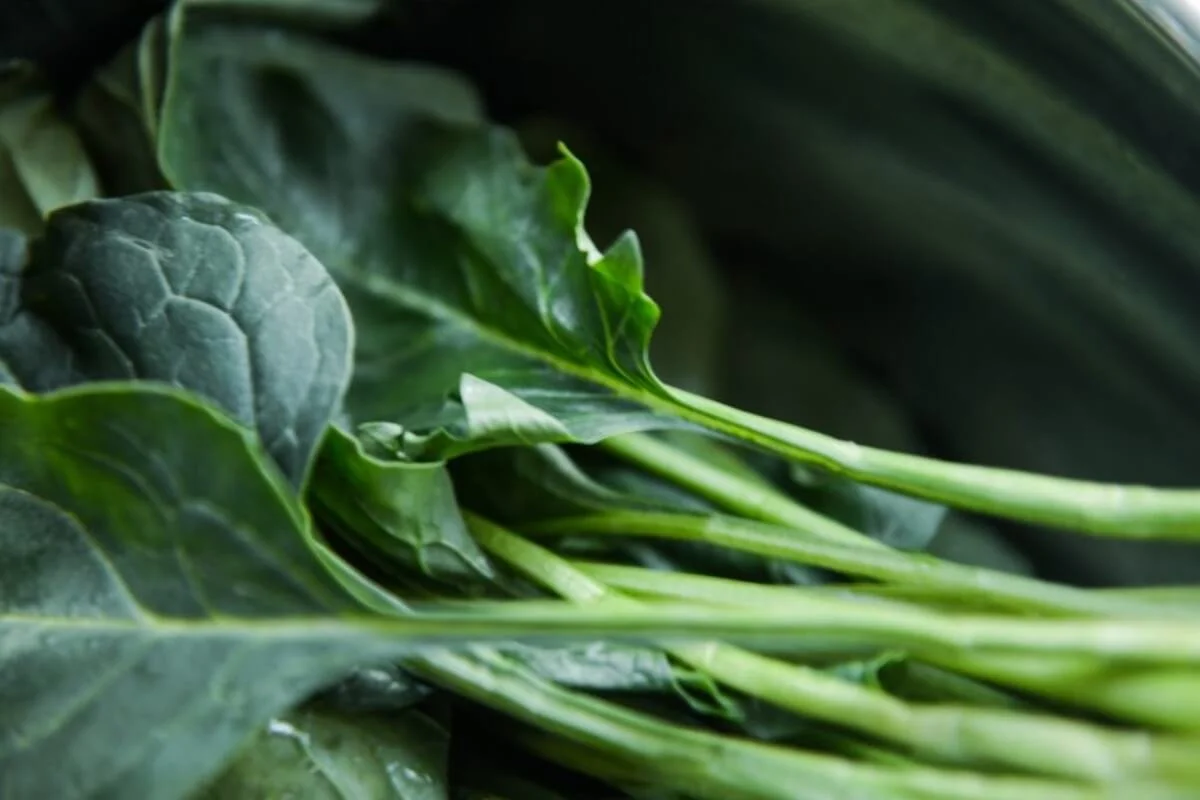Top Summer Leafy Greens in Texas
Discover > Texas Home Cooking > Top Summer Leafy Greens in Texas
There are just too many reasons to enjoy the summer season. Wildflowers everywhere you look, a bounty of birds, butterflies and bees and nature in its most generous moods. You will find all varieties all fresh produce-ripe, colorful and full flavor. Don’t forget the best summer greens. The crunch when you bite into a garden fresh, newly harvested leafy green is just the entire essence of summer.
Texas is the nation’s leader in terms of farms and ranches. We have about 248,416 ranches and farms that cover more than 127 million acres of land! The produce grown on this land is versatile and diverse.
Growing up, a principle that my parents always raised us with was to enjoy produce that was in season. Now, as a parent myself, I try to make the most of those juicy fruits and veggies that are so plentifully available at this time at most farmers markets. Heavy, complicated, and stodgy meals are history now, I love indulging in detailed green salads composed from more than a dozen types of seasonal produce.
There are more than 300 organic farms here in our state and try my best to pick up my produce from an organic farm close to me whenever I can. Pesticide free, hormone free produce has a very different bite to it than the conventionally grown ones in the aisle of a supermarket. Once you turn into an organic produce consumer, you can almost never go back to eating the other kind anymore.
What greens are in season now? I have listed out my favorite greens for the summer season. These I add chopped, to my salads, blend into smoothies and even freeze into popsicles for the kids!
Best Summer Greens: Texas in Season Produce
1.) Arugula
You probably know arugula (how long does arugula last?) for its tart, peppery and bitter flavor. It is also called a “garden rocket” because it grows at ‘rocket speed’! Originated from the Mediterranean region, now arugula is commonly available in most of northern Texas during spring and summer, arugula should be green and lush. Add to it your salad or put it on a pizza, rocket leaves are extremely healthy and nutritious. Rich in folate, calcium, vitamins A, C, and K, arugula is hands down present on my dinner table, regardless of how it is presented. To combat the peppery taste, consider making an arugula pesto with pine nuts (how long do nuts last?) and parmesan.
2.) Garlic Scapes
The tender green stems that start shooting out of your refrigerated garlic (What wine goes well with garlic?) buds are called garlic scapes. Now, if you wouldn’t cut them off, and instead plant them into the soil, the stems would grow into long, curly green beans.
Garlic is one of those plants that are harvested twice, scapes are harvested in early summer and the bulbs later in the same season. Cutting off the scapes is an integral part of garlic farming. You see, the plant expense its energy to grow the stem and flower. this leaves the bulb small and flavorless. Harvesting the scapes allows the garlic to grow beautifully.
Add garlic scapes to dishes where you would add garlic. They can be sautéed, pureed, roasted, or pickled.
3.) Baby Collards
Nutrient dense collards belong to the Brassica Oleracea plant species, same as cabbage, kale (What wine goes well with kale?) and spinach. Collards are some of the best summer greens and great sources of vitamin C and contain elements with some anticancer properties like sulforaphane & diindolylmethane. Surprisingly they are more nutritious that the mighty Kale! It’s true! Collards are anti-inflammatory in nature, and since inflammation is such a common chronic ailment nowadays, I highly suggest tearing up some collards into your meals today especially now that they are in season in Texas!
Tearing up greens while preparing them makes the greens think it is under attack. (yea no kidding!) As a response, the beleaguered plant start churning antioxidant compounds that are meant to protect it. This extra dose of antioxidants is all the better for us!
4.) Purslane
Purslane is actually a weed, which goes by many names. It is a succulent and there are as many as 40 varieties grown across the U.S. Extremely easy to plant and grow, purslane comes with its own array of nutritive qualities. The fresh leaves of this in season produce in Texas contain more omega-3 fatty acids done any other leafy greens. Purslane is also an excellent source of vitamin A, only 100 grams of it provides about 44% of the recommended daily amounts of beta carotene, which is a powerful antioxidant, that converts into vitamin A in our bodies.
The reason why tearing up greens is recommended more than chopping them with a knife is that when the cells are sliced straight through, it results in some nutrient loss. Comparatively, tearing them will result is more cells staying intact, and therefore less nutrient loss!
5.) Baby Chard
Baby chard are green leafy vegetables and some of the best summer greens that have their roots in the Mediterranean region. Roman kale, swiss Chard, strawberry spinach and silverbeet are some of its many names. The harvest time for Baby Chard is about 35 to 40 days post germination, but you can always harvest it sooner depending on how big you want the leaves to be. Saute them with some parmesan and spices or add a bunch to your breakfast omelette, baby chard gives that minty freshness to food. I personally love incorporating baby chard into my tahini (how long does tahini last?) dip. Like any other leafy green, it does reduce in quantity once it’s cooked, so making a big batch of chard and roast veggies at a time for my family of five is the best way to go.
Chard is known for its cancer fighting properties, thanks to the antioxidants in it-kaempferol, quercetin and vitexin.
So this summer, go all out and don’t hold back on the best summer greens that are in season now in Texas. Best eat them as soon after harvesting as possible as the nutrients can reduce with time.







